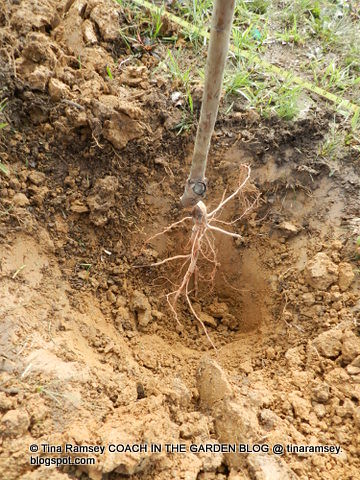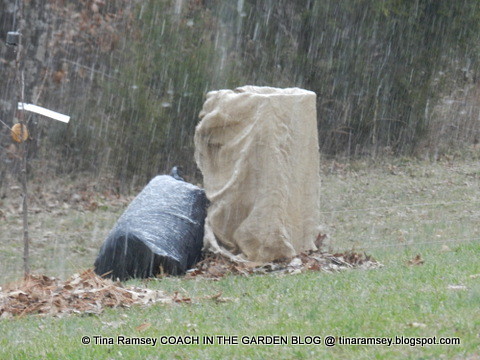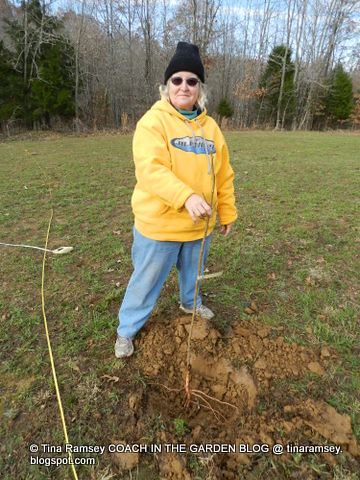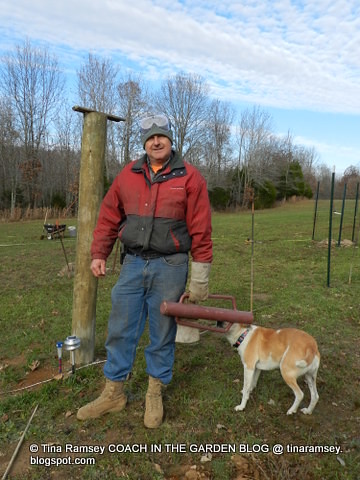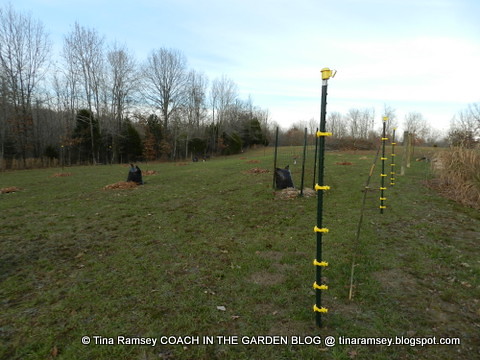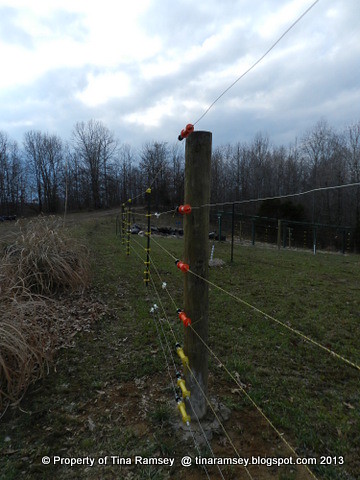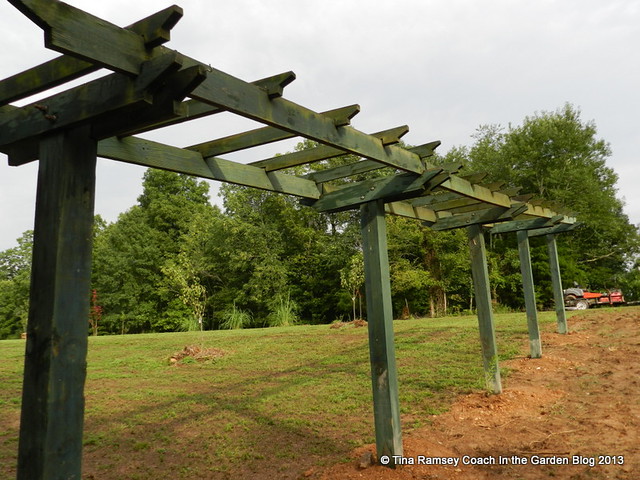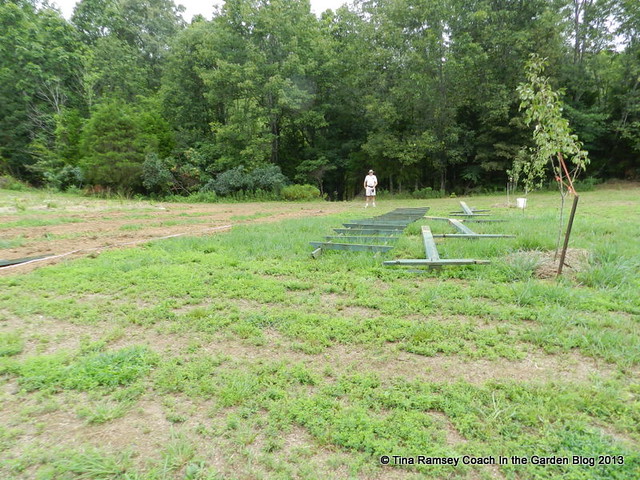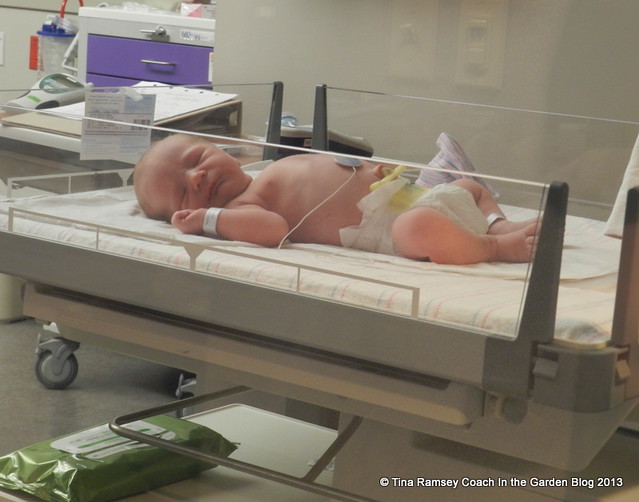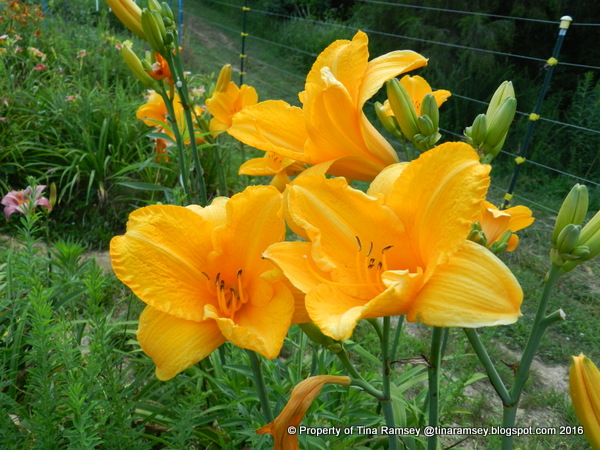
Continuing on with our walk around part of Tiger Way Gardens we find ourselves in the orchard. Here is where most of the daylilies, the fruit trees, hydrangeas, small fruit, and the chickens are in relative safety from marauding wildlife because they are behind a seven strand electrical fence (noted in the background behind these daylilies). I don't always need to turn on the electric fence for it to be a good deterrent but Mr. Fix-it and I recently found some peaches that had been devoured. That caused me to turn on the electric fence and guess what? It worked!
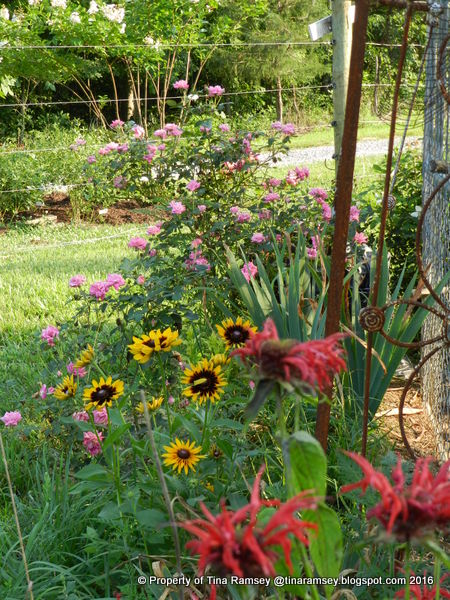
Outside of the chicken coop we find some bee balm, Gloriosa daisies and pink knockout roses. There are also a bunch of lilies and other plantings here. I am trying very hard to at least mask the smell from the girls (and the Boss) and if I can't do that then making the area pretty is a consoling fact.
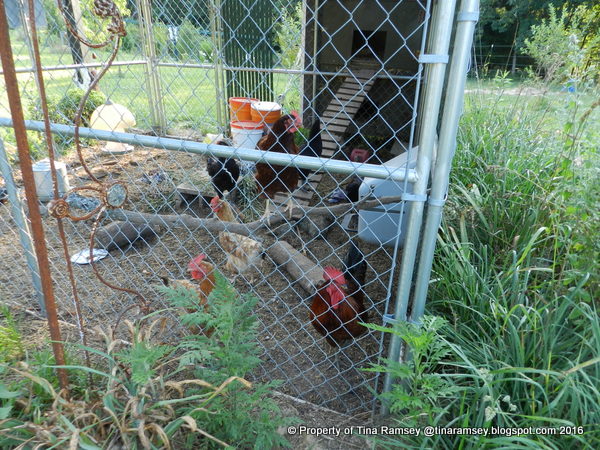
The chickens! We now have six hens and one rooster. Two of hens are golden comets, one is the original Rhode Island Red, the rooster (named The Boss) is a Rhode Island Red, and just this February I purchased three baby Australorpe chicks. The new chicks are now full grown and are the black ones. I did a lot of research on chickens and think the Australorpes will be a good fit for us. I do really enjoy chickens but some days I don't get any eggs between the hens eating their own eggs and them just not laying regularly as they age. It is frustrating. Now that I have been successful with chicks I may add one or two yearly just to keep up the flock. We really love fresh eggs in the Ramsey household!
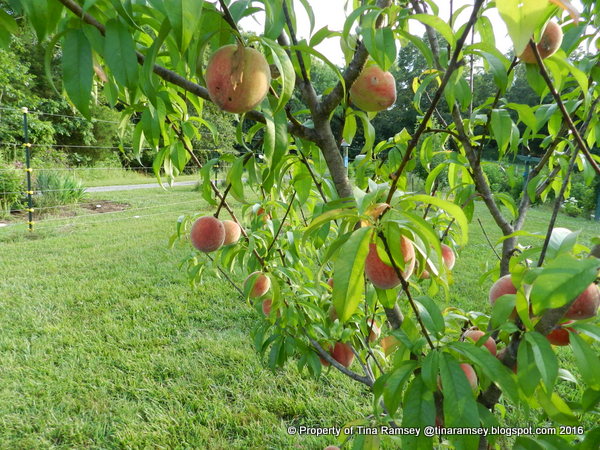
The orchard was planted three years ago come November. I remember it well because it was very cold. I believe this peach tree to be the Early White variety. I can't believe it produced so many peaches after less than three years. We have one other peach tree with peaches too. It's cultivar is Intrepid. We have also harvested some tart cherries and plums from the fruit tree part of the orchard. Right now we are currently picking blueberries and raspberries. The blackberries will be coming on soon.
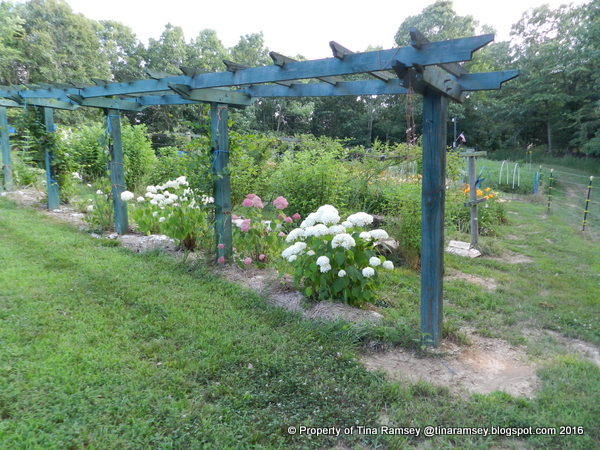
The grape arbor with its hedge of 'Annabelle' hydrangeas and one lone surviving 'Bella Anna' is looking good. Growing up the arbor we have a 'Concord' grapevine, two muscadine grapevines, and one hardy kiwi vine. All of the grapevines are loaded with grapes. We are pretty excited about them. The hardy kiwi is not yet bearing.

The three daylily beds are in full bloom. This picture really does not do them justice as the flowers and total effect is stunning. I have not weeded these beds at all this year and they really need some attention although the weeds are not too awfully visible in this picture. Thank goodness!
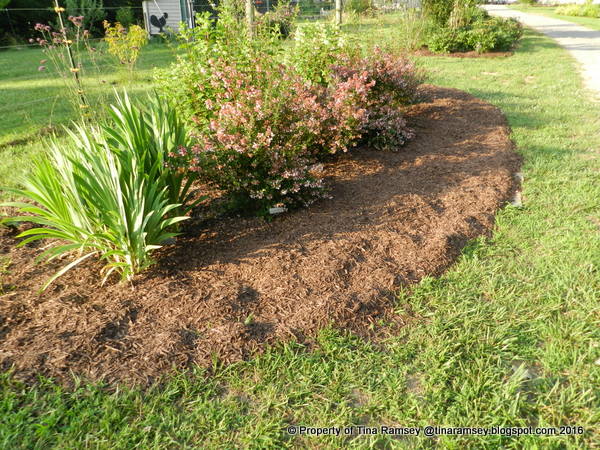
This butterfly garden started life as an 'Orange Garden'. I am transitioning it a bit still focusing it on butterflies. The straight leafed plant on the left is Chinese blackberry and it is about to bloom. The frilly flowered shrub is Abelia 'Raspberry Profusion'. The swallowtails love abelias! This is a popular area this time of the year. Behind the abelias are two 'White Diamond' hydrangeas with a new addition from Proven Winners of 'Blue Diddley' Chaste tree. I am very excited to see how this shrub does because chaste trees have a beautiful blue flower that blooms in the summer and the blooms are beloved by butterflies. This particular cultivar is supposed to stay relatively small so that it can fit into garden easily. This fall I will probably add some sedum and coneflowers or rudebeckia to the front of the garden for some perennial interest.
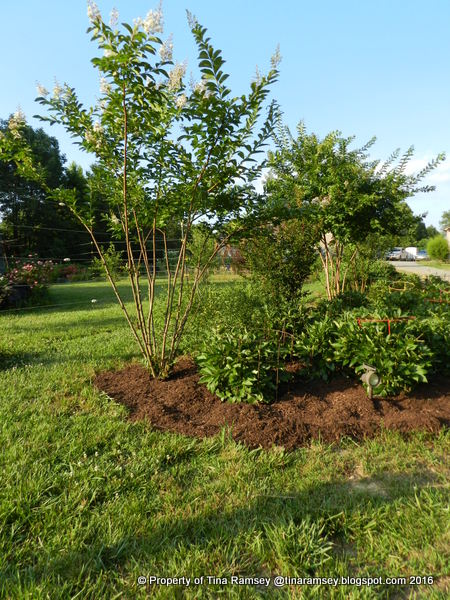
Right next to the Orange Garden is the Peony Garden. The peonies were spectacular in May but they have all gone by now. The five crepe myrtles I dug up from my old garden are now beginning their bloom period and look great. I find that bees really like crepe myrtle blooms and for me that is an added benefit to the crepes since I try to garden for pollinators.
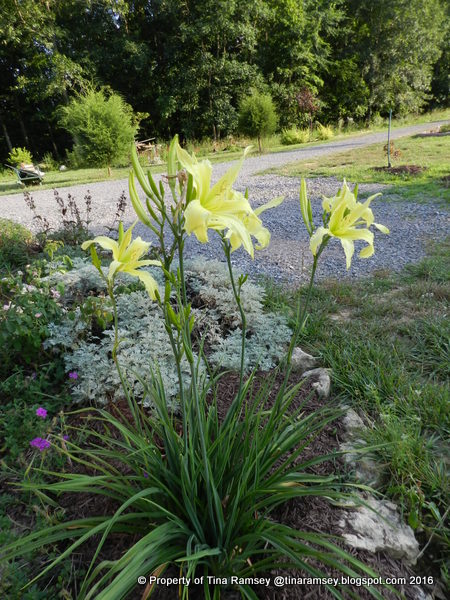
These lime green daylilies were a gift from my friend Angie of Angie's Gardens. They look lovely in an island garden right next to our driveway near the house.
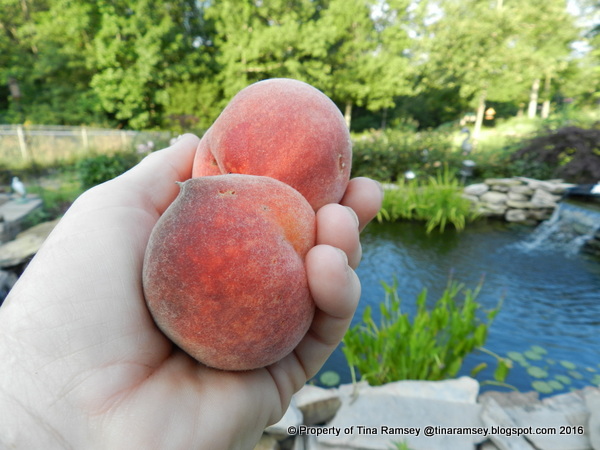
Here are a few of the peaches we have been picking. For Mr. Fix-it and I we find the ability to walk outside our door and pick our food to eat right then and there a most amazing thing. I will try to get a vegetable garden post up this month. We've harvested a bunch of potatoes and onions and even one tomato so far and some heads of cabbage. Yum!
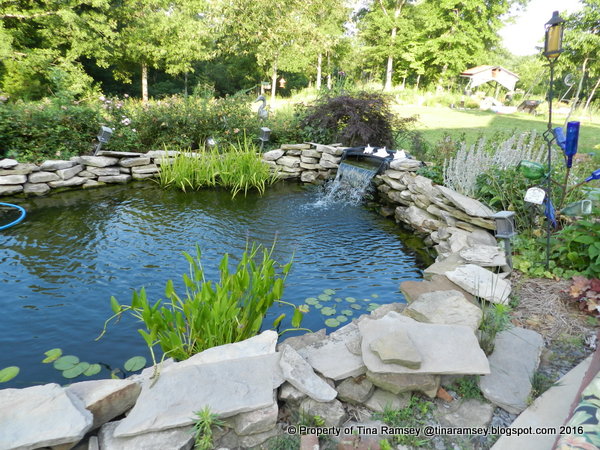
One last picture of my koi pond. I simply love this spot on a hot day. The sound of running water helps to cool things down here in Tennessee. Speaking of which, I will be giving a presentation to the Perennial Plant Society of Middle Tennessee at Cheekwood Botanical Gardens on July 19th at 7:00 PM. Be sure to come on out and show me some support! I'll be talking about how to keep cool....
in the summer garden.....
Words and Photos Property of In the Garden Blog Team, In the Garden

